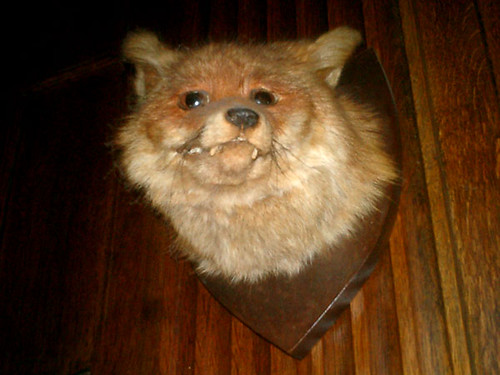Lul in Dutch = Prick
Erasmus Bridge
Wonky Fox
Sunlight on Glasses
Jean Baudrillard – The Conspiracy of Art
In a way, it [art] is worse than nothing, because it means nothing and nonetheless exists, providing itself with all the right reasons to exist.
Jean Baudrillard – The Conspiracy of Art
Hesse – Nature Reflecting Ourselves
Without realizing it, the organist, Pistorius, had given me my first lesson when I had lain beside him in front of the fire on the floor of his hermit’s room. Staring into the fire had done me good; it had strengthened and confirmed certain predispositions which I had always possessed but never cultivated. Gradually I was beginning to understand them.
Even as a child I had had at intervals a fondness for observing strange forms in nature, no so much examining them as surrendering myself to their magic, their oblique message. Long tree-roots, coloured veins in rock, patches of oil floating on water, flaws in glass – all such things had a certain fascination for me, above all, water and fire, smoke, clouds, dust and especially the swirling specks of colour which swam before my closed eyes. In the days following my first visit to Pistorius, I began to call this to mind. For I noticed that I owed a new strength and gaiety, an intensification of feeling – of which I only became aware later – exclusively to this prolonged staring into the fire. I found it remarkably comforting and rewarding.
To the few experiences which I had discovered on the road to my goal was now added this new one. The consideration of such images as I have mentioned, the surrender to odd, irrational forms in nature produces in us a sense of the harmony of our inner being with the will which has become responsible for these shapes. Soon we become aware of the temptation to think of them as being our own moods, our own creations; we see the boundaries between ourselves and nature quiver and dissolve and we become aquainted with the state of mind when we are unable to decide whether the lineaments of our body result from impressions received from outside of from within us. In no other practice is it so simple to discover how creative we are and to what extent our souls participate in the constant creation of the world. To an even greater extent it is this same indivisible divinity which is active in us and in nature so that if the outer world were destroyed each one of us would be capable of building it up again. For mountain and stream, tree and leaf, root and blossom, every form in nature is echoed in us and originates from the soul whose being is eternity and is hidden from us but none the less gives itself to us for the most part in the power of love and creation.
It was not until many years later that I found this view recorded in a book by Leonardo da Vinci who on one occasion describes how good and deeply moving it is to look at a wall which many people have spat upon. Confronted with each stain on the wet wall, he must have felt the same as Pistorius and I did in front of the fire.
Herman Hesse – Demian. p115
Bacon – Blood
Francis liked the colour of blood; this was his own justification for his morbid subject matter. ‘You’ve only got to go into a butcher’s shop like Harrods Food Hall,’ he said.
It was typically Baconian that he saw it in the context of Harrods.He continued: ‘It’s nothing to do with mortality but it’s to do with the great beauty of the colour of the meat.’ Rembrandt and Soutine shared his attraction to the raw flesh of hanging carcasses.
Daniel Farson – The Gilded Gutter Life Of Francis Bacon. p 129
Red Gantries
Taken at the Bimhuis, Amsterdam, watching Hudson Mohawke & Flying Lotus.










